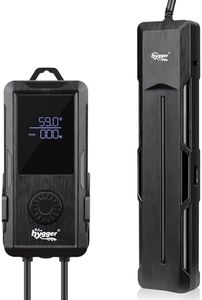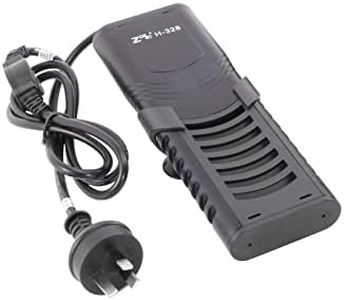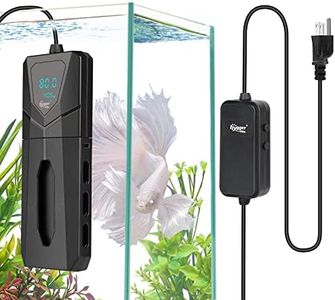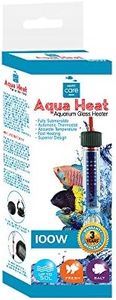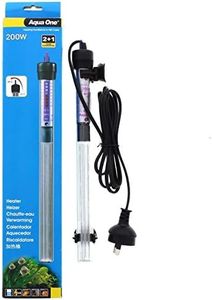We Use CookiesWe use cookies to enhance the security, performance,
functionality and for analytical and promotional activities. By continuing to browse this site you
are agreeing to our privacy policy
10 Best 75 Gallon Aquarium Heater
From leading brands and best sellers available on the web.Buying Guide for the Best 75 Gallon Aquarium Heater
Choosing the right heater for your 75-gallon aquarium is crucial to maintaining a healthy and stable environment for your aquatic life. The right heater will keep the water at the optimal temperature range, support the health and well-being of your fish or other tank inhabitants, and ensure your aquarium runs smoothly year-round. It's important to consider the tank's overall size, the ambient room temperature, and the type of creatures living in your aquarium when selecting a heater. This approach helps you find the best match to keep your aquarium comfortable and safe.WattageWattage refers to the amount of power the heater can use to warm the aquarium. This is crucial because a heater that's too weak won't maintain the desired temperature, while one that's too strong can overheat the water. For a 75-gallon aquarium, the general guideline is about 3-5 watts per gallon, which suggests you'll need a heater rated for 225 to 375 watts. If your room is much cooler than your target aquarium temperature, choose the higher end of this range or consider using two heaters for more even heating and safety.
AdjustabilityAdjustability describes whether and how much you can set the heater to a specific temperature. Heaters with adjustable thermostats let you select precise temperatures, which is important if you keep sensitive species or need to change the temperature for certain purposes (like breeding). Fixed heaters set one temperature and are less flexible. For most users, especially if you're new to fishkeeping or have a community aquarium, an adjustable heater is the safer and more versatile choice.
Heater TypeAquarium heaters come in several types: submersible, immersion, in-line, and substrate heaters. Submersible heaters go entirely under water and are easy to hide and position, making them the most common. Immersion (or hanging) heaters hook onto the tank edge but may not heat as evenly. In-line heaters are installed in the filtration system and keep equipment out of the tank but require compatible filters. Substrate heaters are placed under the gravel and are mainly for planted tanks. For most general aquarium needs, a submersible heater offers the best combination of simplicity and effectiveness.
Temperature Control and PrecisionThis refers to how accurately a heater can maintain and display the tank temperature. Some heaters only have basic dials, while others use digital controls and displays for greater precision. Higher control accuracy is valuable for delicate fish or marine aquariums where stability matters. Simpler analog heaters are often fine for hardy freshwater fish. Choose a heater with precise controls and a clear temperature display if you have sensitive species or want peace of mind.
Safety FeaturesSafety features can include automatic shut-off when the heater is exposed to air, shatterproof materials, and overheating protection. These are important to prevent accidents like glass breakage or the heater running dry, which could harm both your fish and your equipment. For larger tanks like a 75-gallon setup, extra safety is especially important because problems can affect more creatures. Always look for heaters with at least basic protections, and consider added features for extra reliability.
Build Quality and DurabilityBuild quality refers to how well the heater is constructed and how durable it will be over time. Strong materials like shatter-resistant glass, titanium, or ceramic last longer and withstand bumps or temperature swings. Durability means fewer replacements and lower risk of failure, which is important for the stability of your aquarium. If your tank will run for years or is placed where it might get knocked or moved, focus on robustly built heaters.
